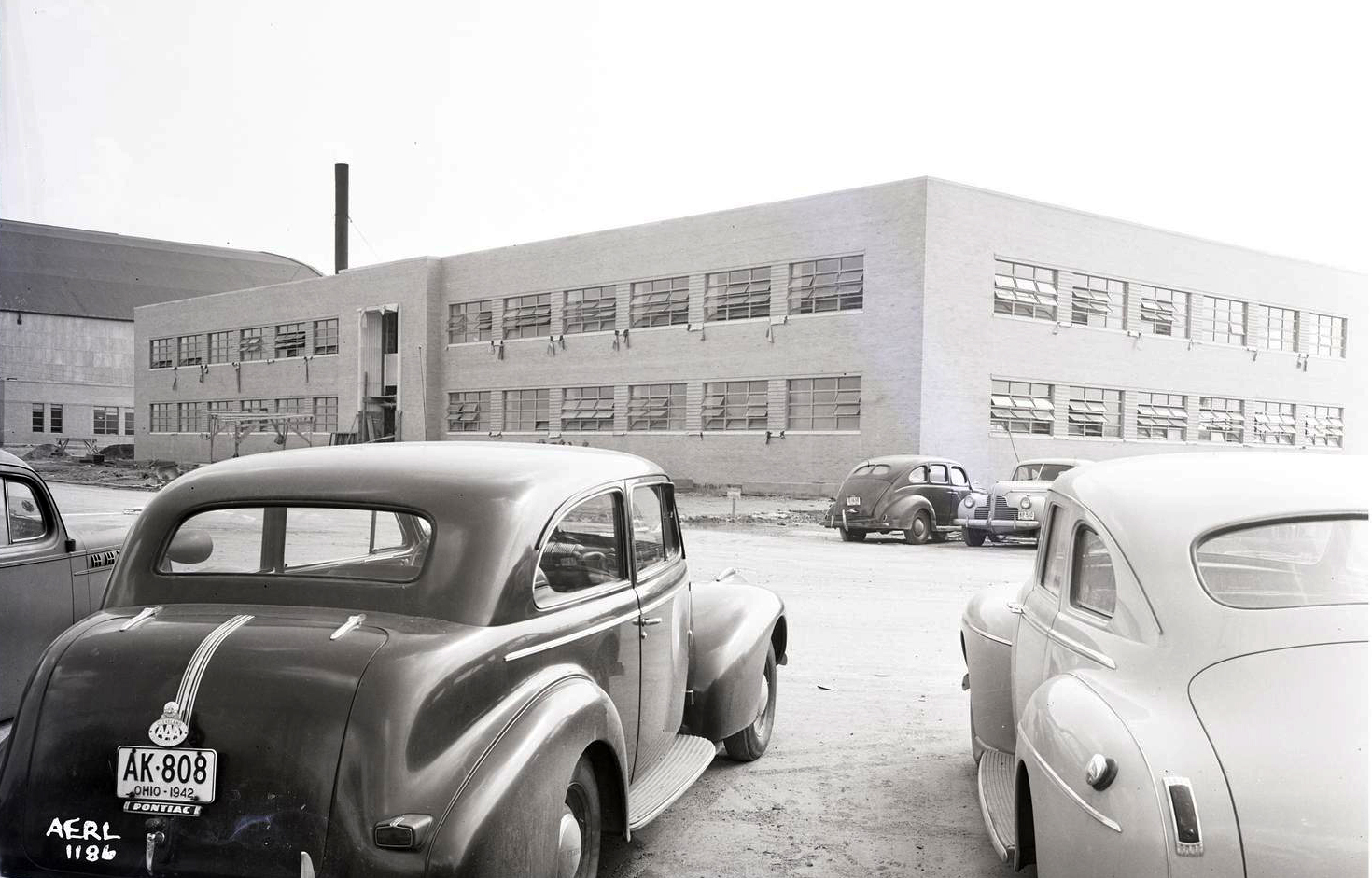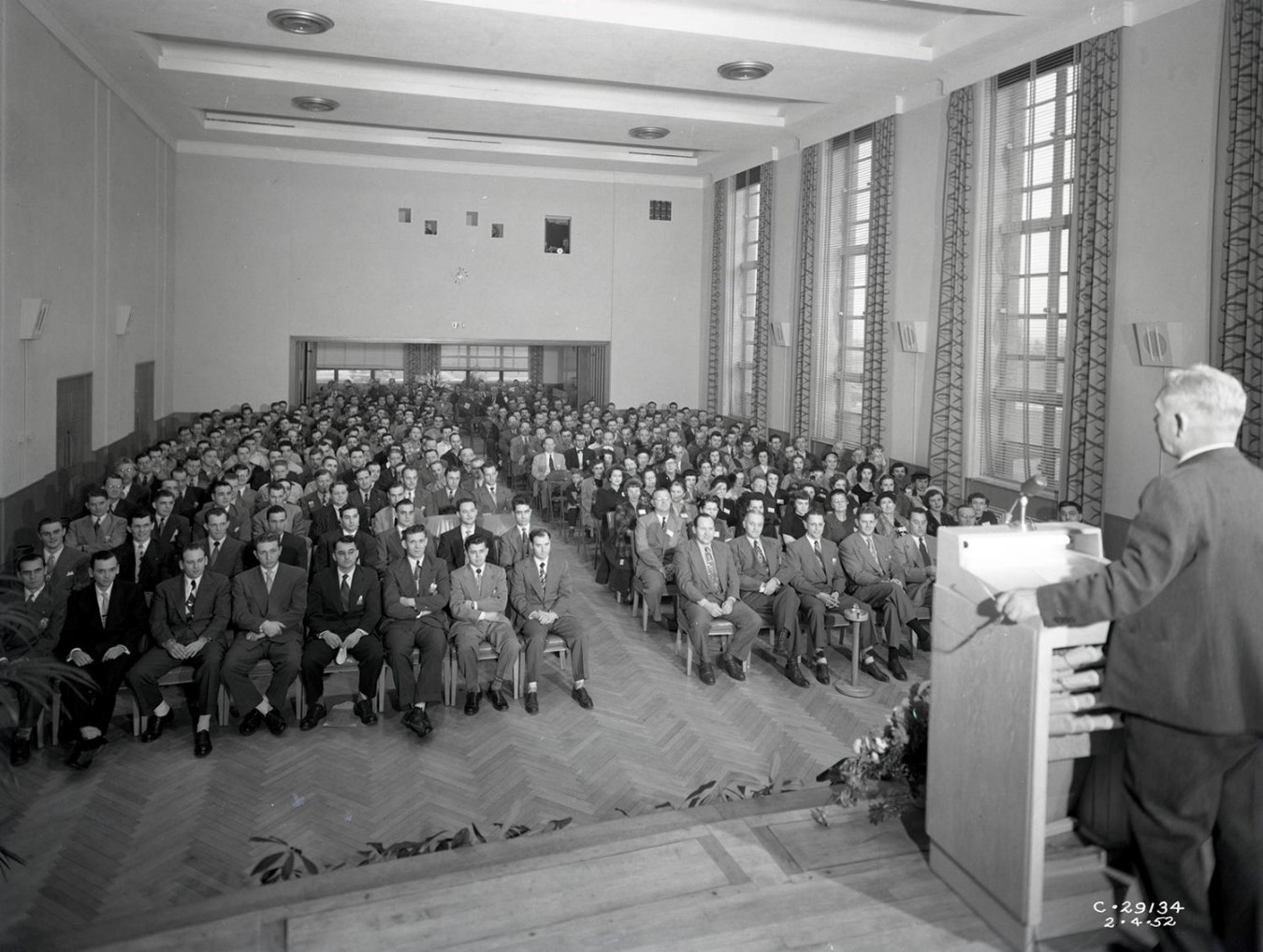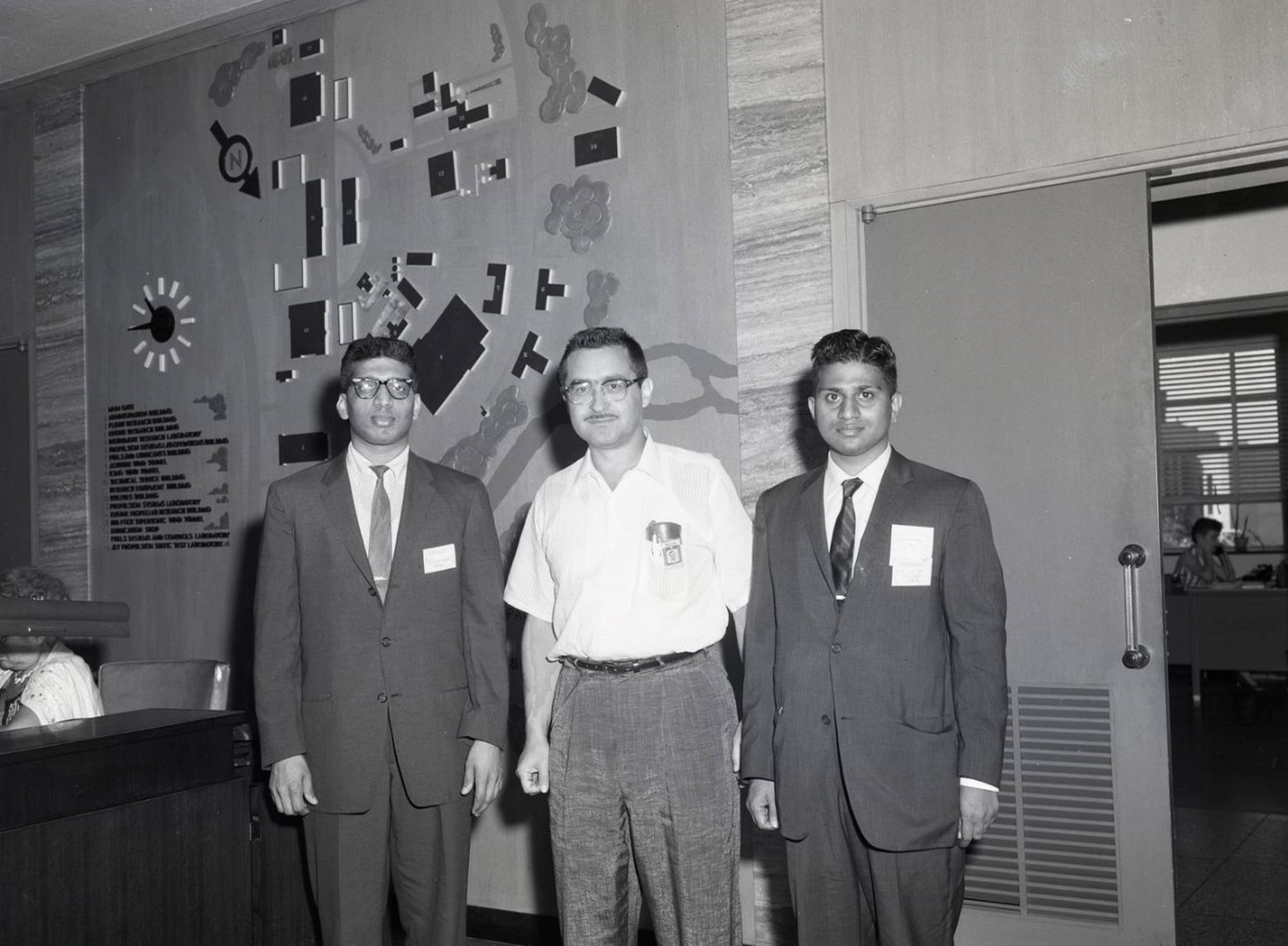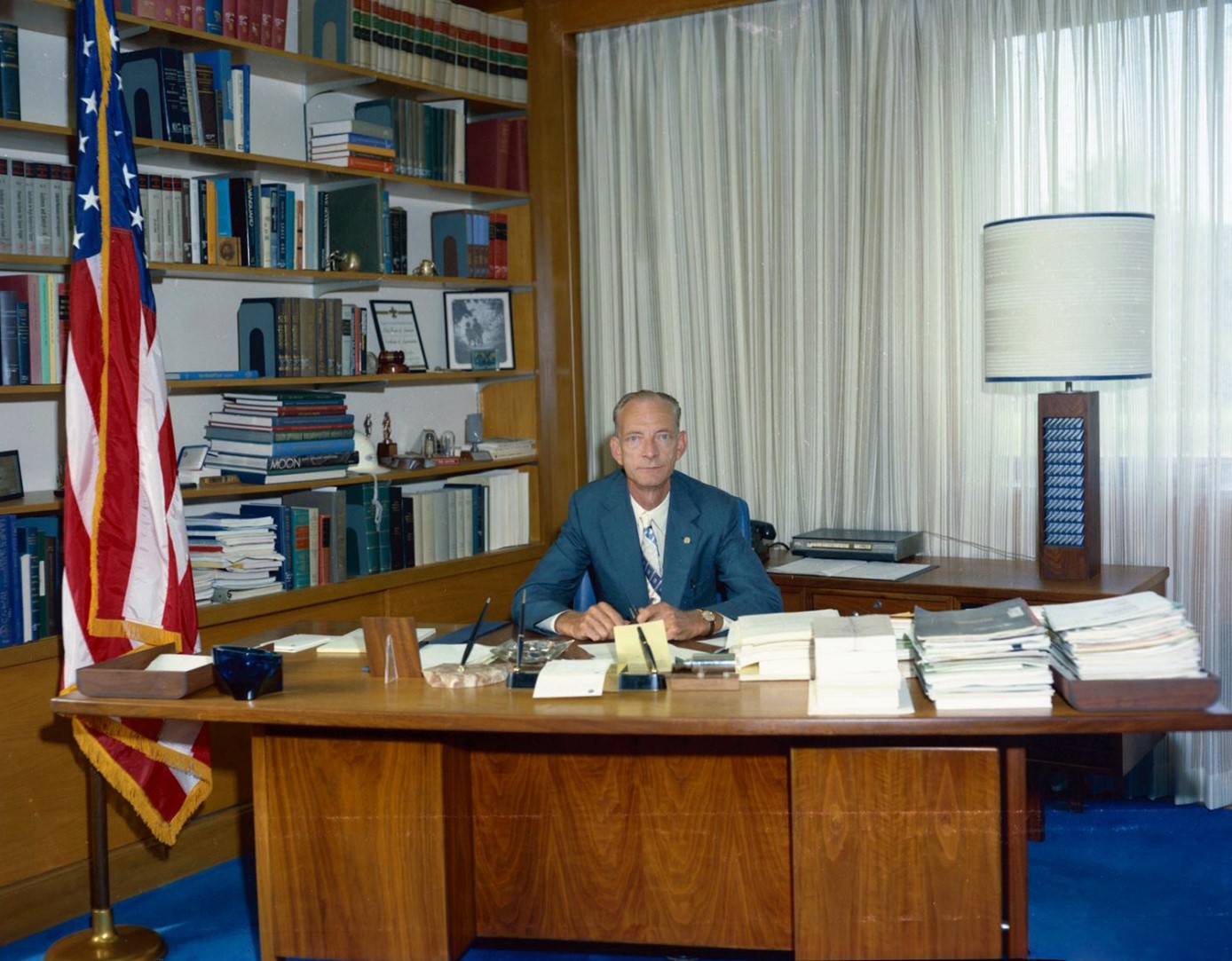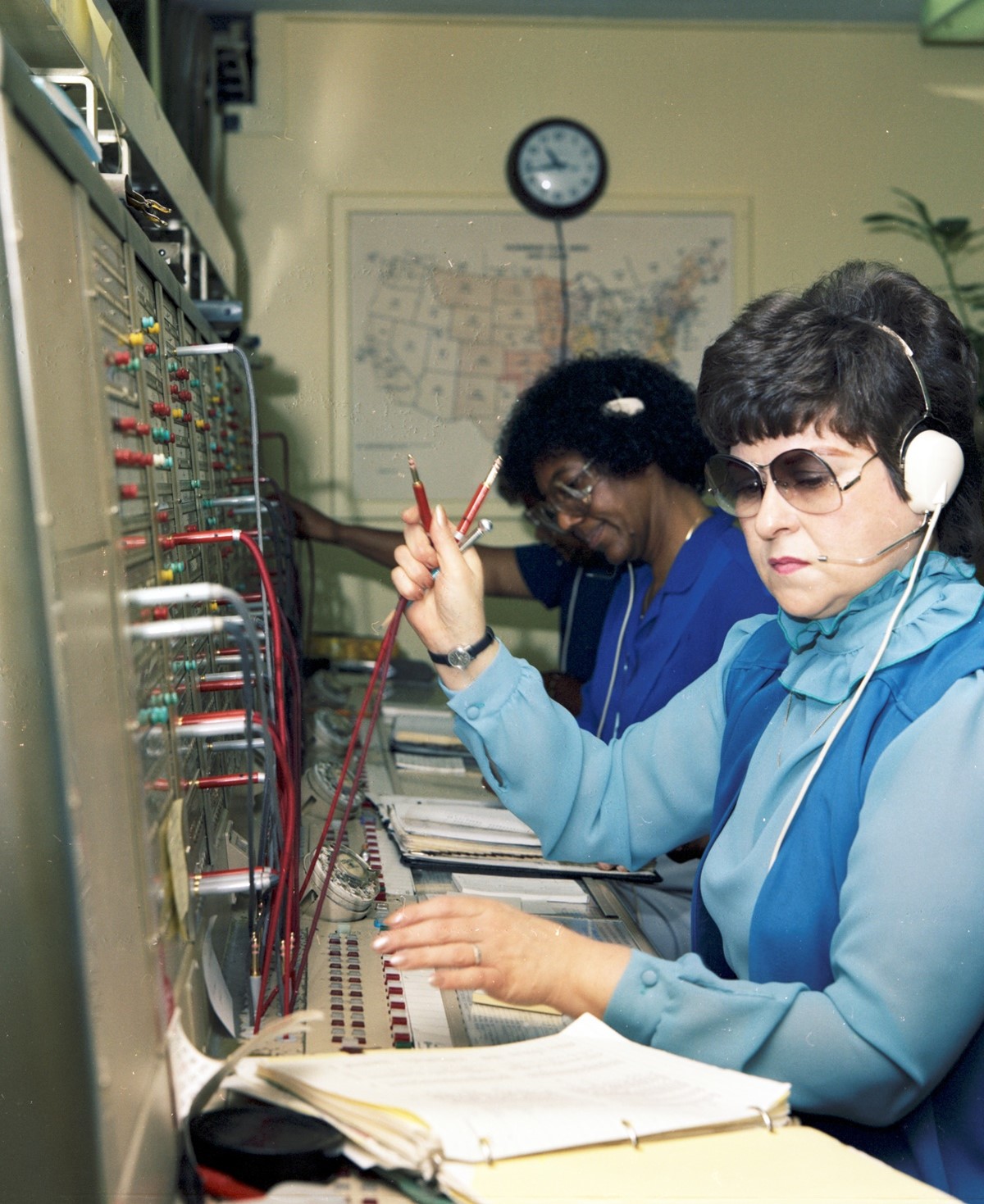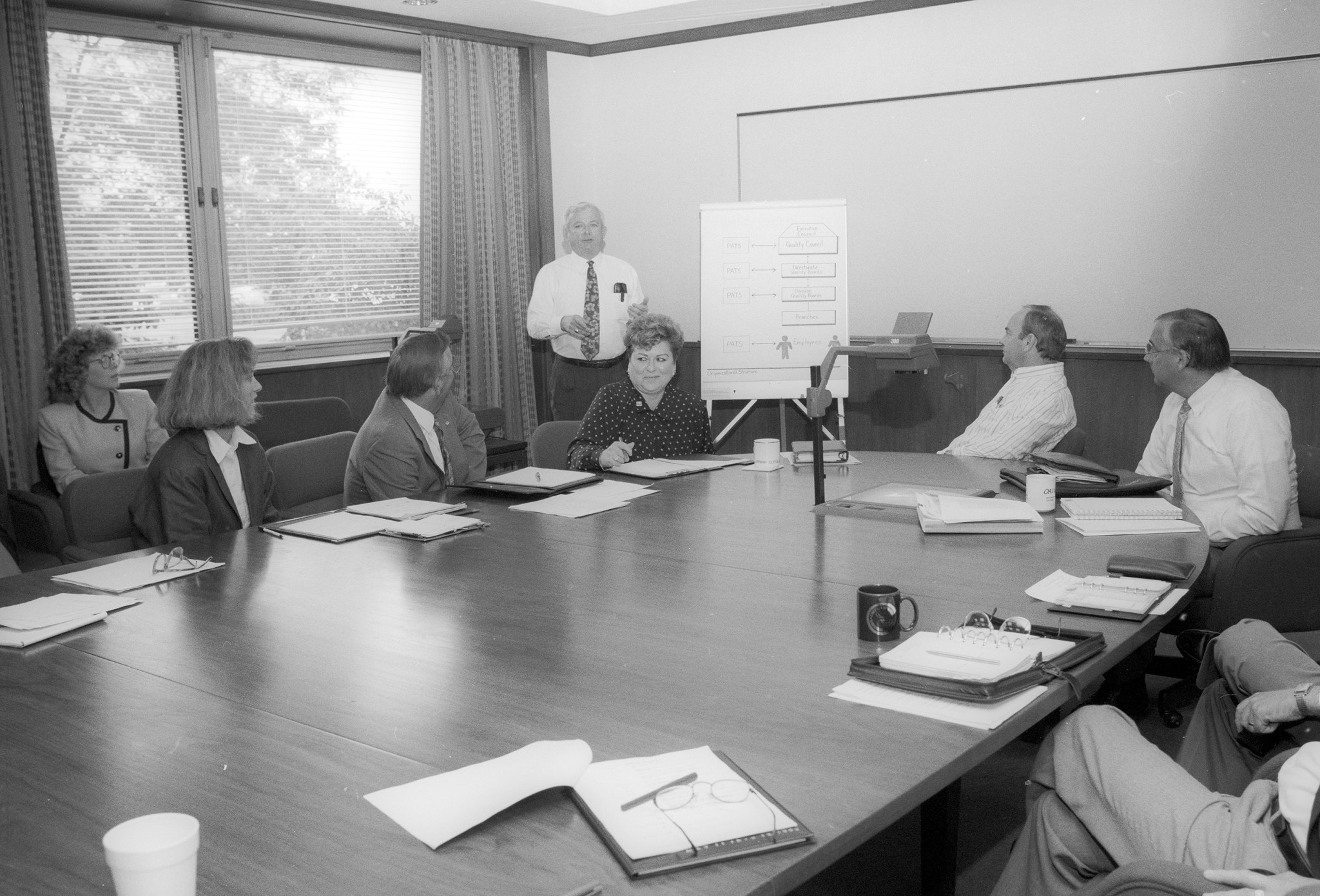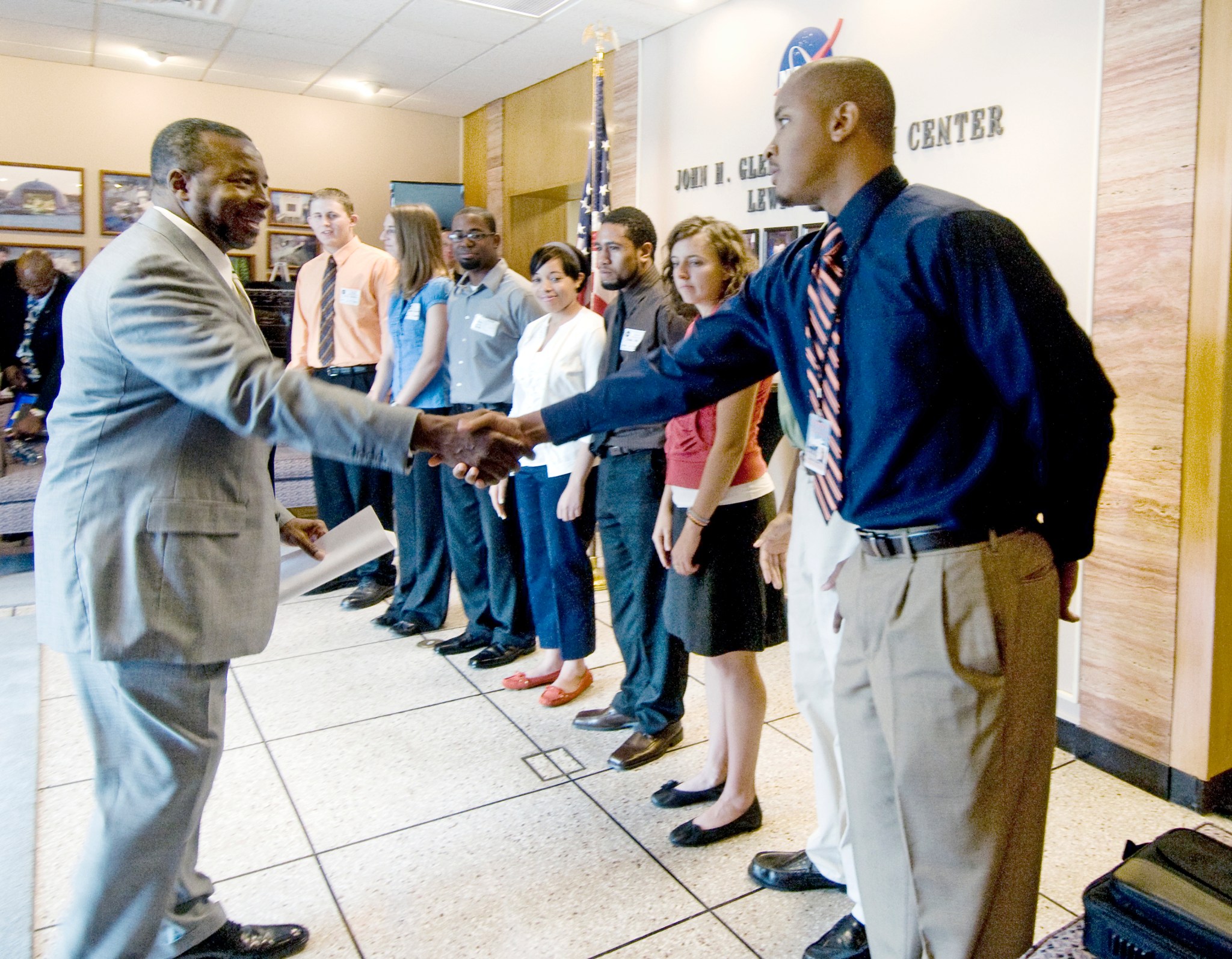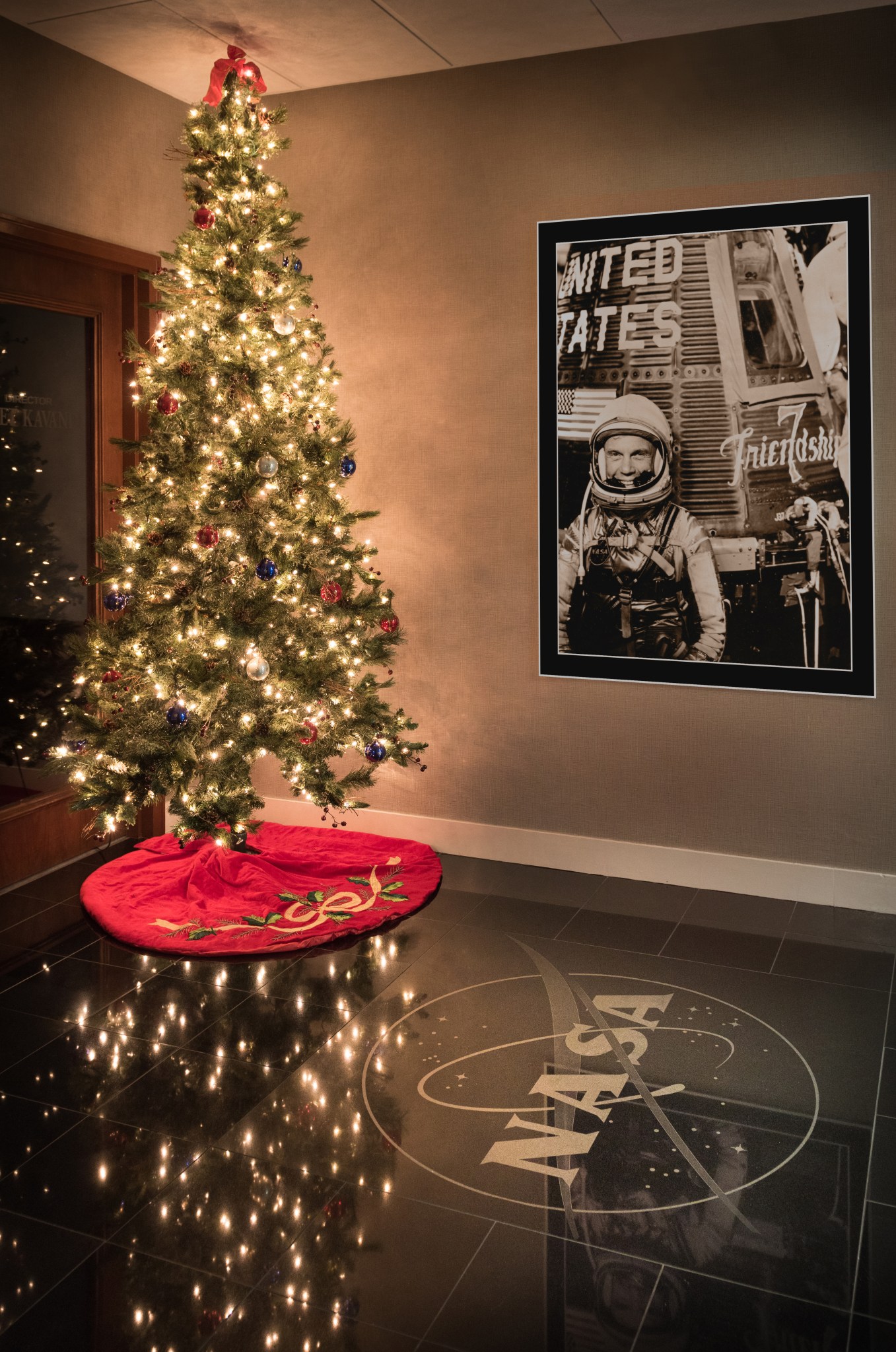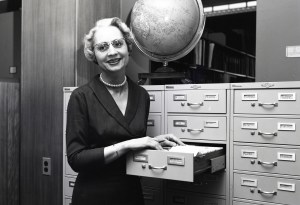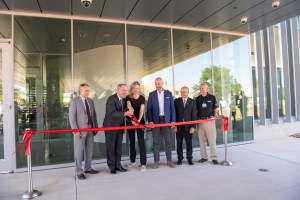On December 14, 1942, the new Administration Building opened at the NACA’s Aircraft Engine Research Laboratory (today, NASA’s Glenn Research Center). The Ad Building, located just inside the main gate, has been a hub for center leadership, employee activities, visitor interaction, and communications for nearly 80 years.
With little fanfare, NACA employees moved into the brand-new Administration Building on Monday morning December 14, 1942. Although muted by the wartime atmosphere, the event was a significant step during the construction of the laboratory. Manager Raymond Sharp and his immediate staff were previously stationed in an old farmhouse nearby, while the other employees had occupied temporary offices inside the hangar. The two-story, U-shaped building is seen above in October 1942 during the final weeks of construction.
From the very beginning, the Ad Building’s large auditorium provided a central location for employees to meet for technical meetings, award ceremonies, and social affairs. The room has also been a standard stop for large groups of visitors, such as those attending the NACA Inspections. Here, former Director Raymond Sharp addresses graduates of the laboratory’s Apprentice Program in 1952.
For decades, a receptionist was stationed in the Ad Building lobby to greet visitors, arrange meetings, and coordinate tours. Guests have included scientists and engineers from around the world, military leaders, and political officials. It was customary for hosts to pose for photographs with the visitors, often on the front steps of the building. Here, Researcher Simon Ostrach (center) greets educators from India shortly after the NACA’s transition to NASA.
The primary function of the Ad Building is to provide a base for center leadership. During the 1940s and 1950s Raymond Sharp, the first and longest serving director, had his office on the second floor above the main entrance. There was reception office on one side and an executive conference on the other. His successor, Abe Silverstein, decided to retain the office at the east end of the first floor that he had previously used as Associate Director. Center directors have remained in that first-floor location ever since. Here, former director Bruce Lundin is seen working in his office in 1977.
The Ad Building has also been home to various support operations. The center library was located on the second floor from 1943 to 1966. The Communications Center which included switchboards and teletype machines was located on the basement level until the mid-1980s. The Office of Communications has been stationed in the Ad Building since the early 1960s. Here, operators transfer telephone calls in 1983.
The Ad Building includes two primary meeting areas—a conference room at the west end of the first floor and the executive conference room on the second floor. The former originally abutted the auditorium with sliding doors that could be opened to provide a lounge area at the rear of the hall. The executive conference room was originally adjacent to the second-floor director’s office. Both are still in use today. Here, former director Larry Ross meets with his executive council in 1992.
The Ad Building has undergone many renovations throughout the years but remains the center’s primary location for management and external relations at the center. Here, former director Woodrow Whitlow greets new civil service employees in 2009.
It has also been the location for workforce events such as holiday gatherings and celebrations. NASA Glenn’s Administration Building will be a central meeting point for years to come.


























